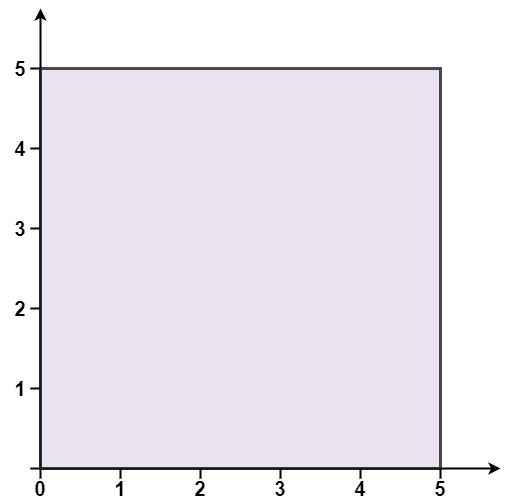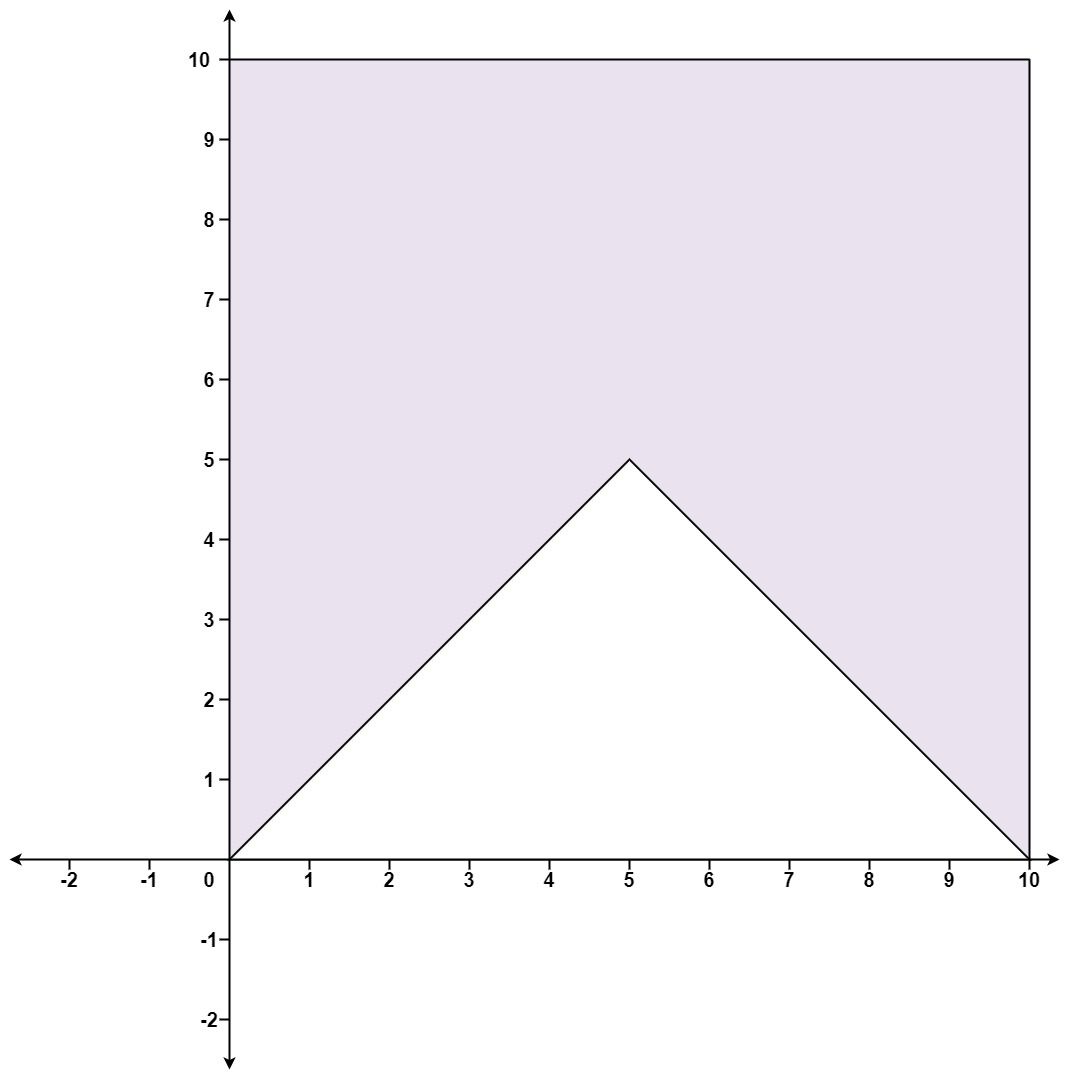Welcome to Subscribe On Youtube
469. Convex Polygon
Description
You are given an array of points on the X-Y plane points where points[i] = [xi, yi]. The points form a polygon when joined sequentially.
Return true if this polygon is convex and false otherwise.
You may assume the polygon formed by given points is always a simple polygon. In other words, we ensure that exactly two edges intersect at each vertex and that edges otherwise don't intersect each other.
Example 1:

Input: points = [[0,0],[0,5],[5,5],[5,0]] Output: true
Example 2:

Input: points = [[0,0],[0,10],[10,10],[10,0],[5,5]] Output: false
Constraints:
3 <= points.length <= 104points[i].length == 2-104 <= xi, yi <= 104- All the given points are unique.
Solutions
-
class Solution { public boolean isConvex(List<List<Integer>> points) { int n = points.size(); long pre = 0, cur = 0; for (int i = 0; i < n; ++i) { var p1 = points.get(i); var p2 = points.get((i + 1) % n); var p3 = points.get((i + 2) % n); int x1 = p2.get(0) - p1.get(0); int y1 = p2.get(1) - p1.get(1); int x2 = p3.get(0) - p1.get(0); int y2 = p3.get(1) - p1.get(1); cur = x1 * y2 - x2 * y1; if (cur != 0) { if (cur * pre < 0) { return false; } pre = cur; } } return true; } } -
class Solution { public: bool isConvex(vector<vector<int>>& points) { int n = points.size(); long long pre = 0, cur = 0; for (int i = 0; i < n; ++i) { int x1 = points[(i + 1) % n][0] - points[i][0]; int y1 = points[(i + 1) % n][1] - points[i][1]; int x2 = points[(i + 2) % n][0] - points[i][0]; int y2 = points[(i + 2) % n][1] - points[i][1]; cur = 1L * x1 * y2 - x2 * y1; if (cur != 0) { if (cur * pre < 0) { return false; } pre = cur; } } return true; } }; -
class Solution: def isConvex(self, points: List[List[int]]) -> bool: n = len(points) pre = cur = 0 for i in range(n): x1 = points[(i + 1) % n][0] - points[i][0] y1 = points[(i + 1) % n][1] - points[i][1] x2 = points[(i + 2) % n][0] - points[i][0] y2 = points[(i + 2) % n][1] - points[i][1] cur = x1 * y2 - x2 * y1 if cur != 0: if cur * pre < 0: return False pre = cur return True -
func isConvex(points [][]int) bool { n := len(points) pre, cur := 0, 0 for i := range points { x1 := points[(i+1)%n][0] - points[i][0] y1 := points[(i+1)%n][1] - points[i][1] x2 := points[(i+2)%n][0] - points[i][0] y2 := points[(i+2)%n][1] - points[i][1] cur = x1*y2 - x2*y1 if cur != 0 { if cur*pre < 0 { return false } pre = cur } } return true }